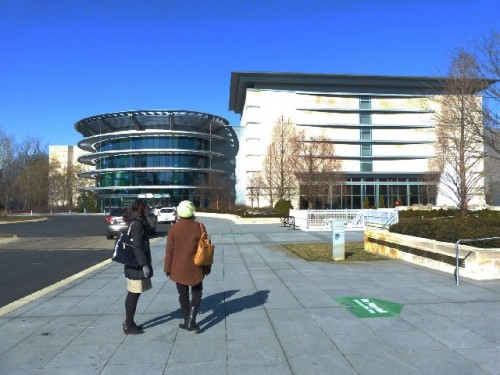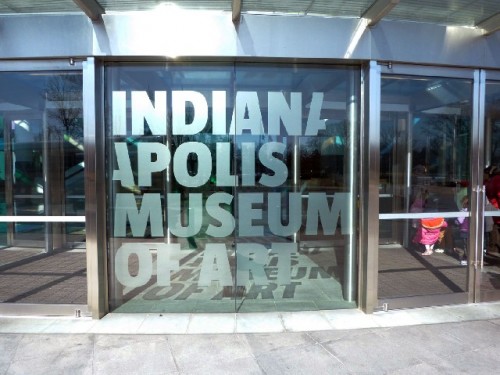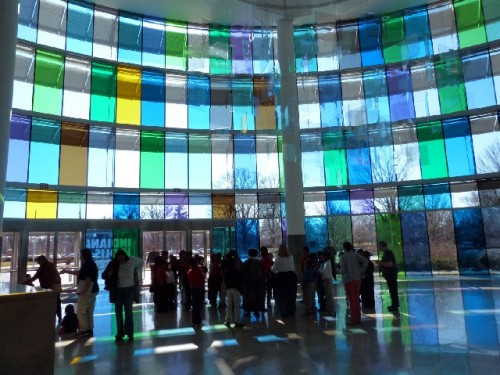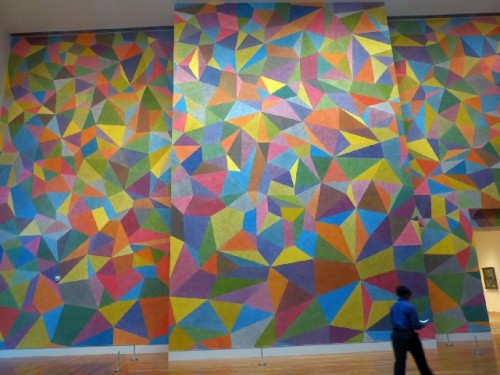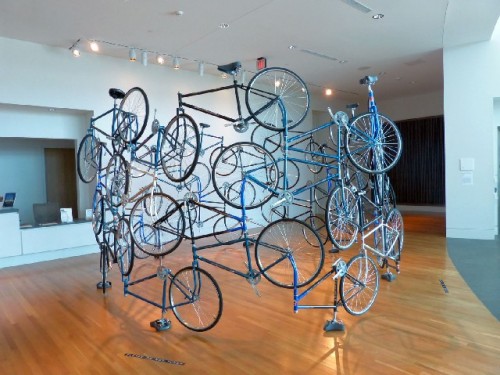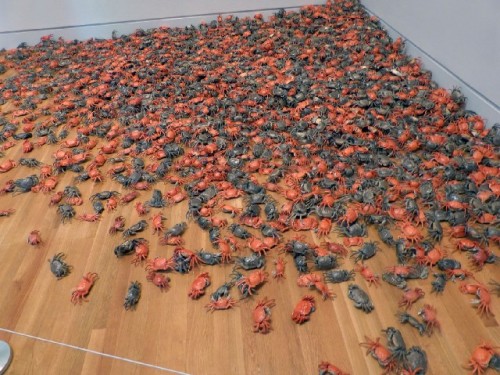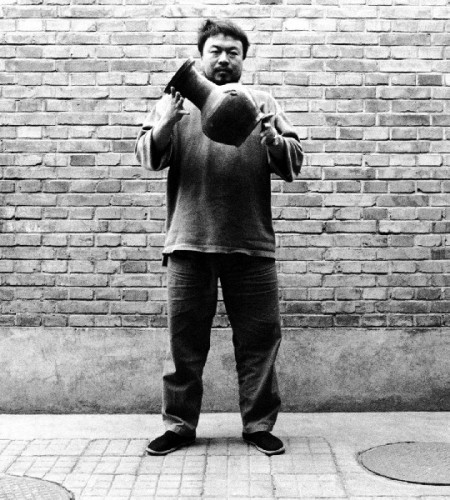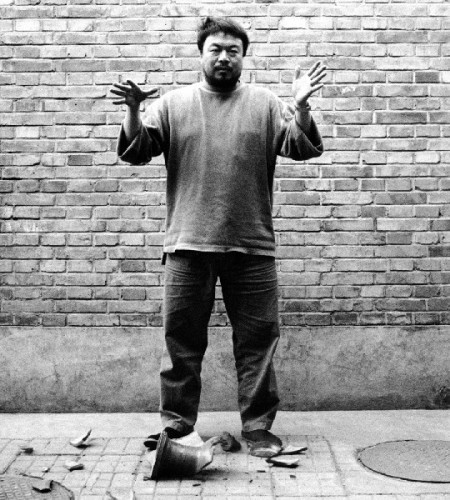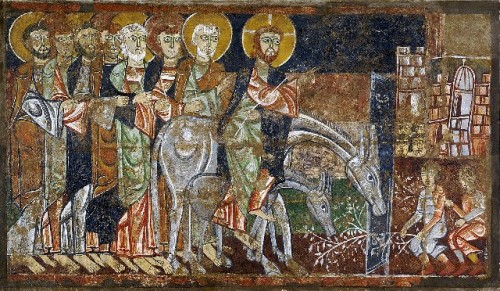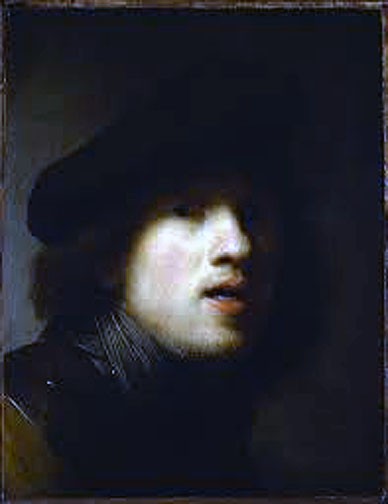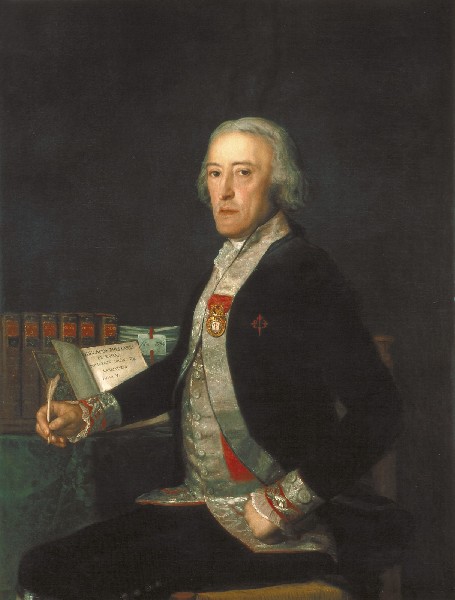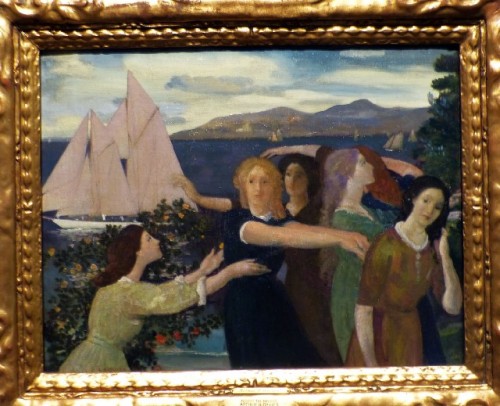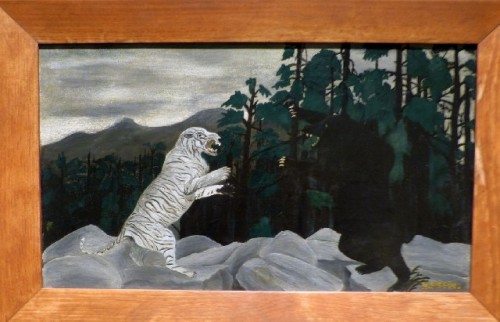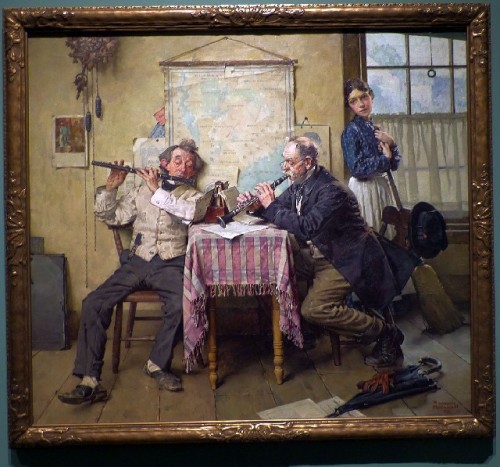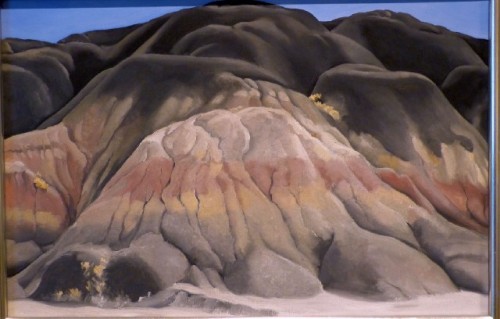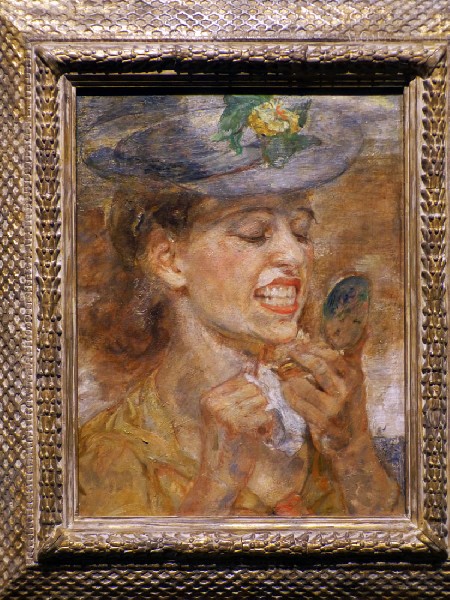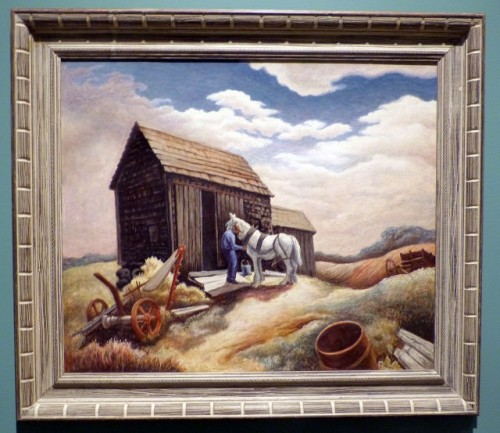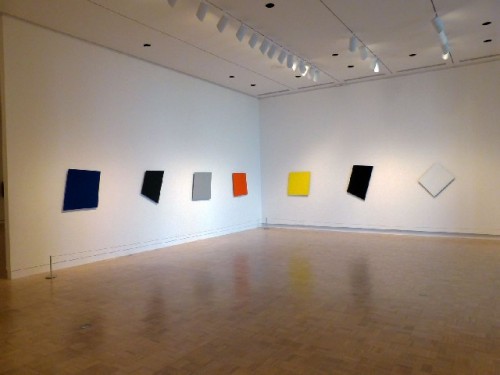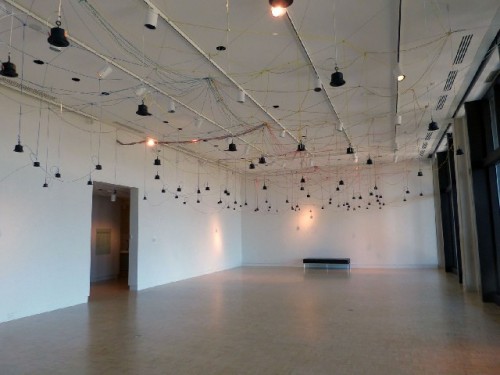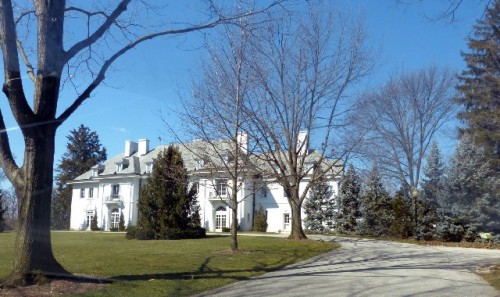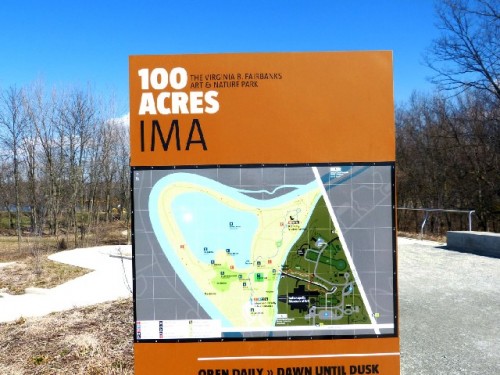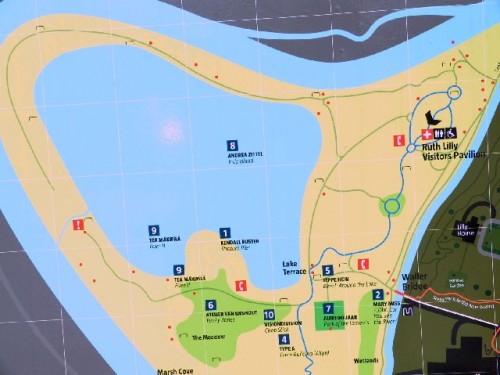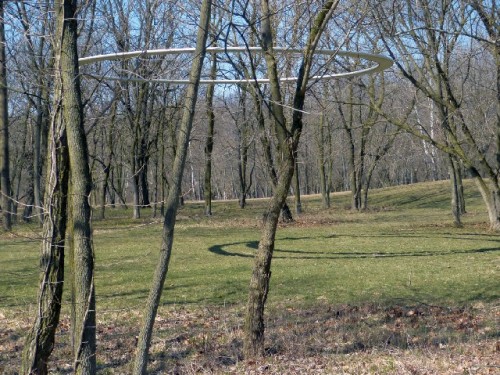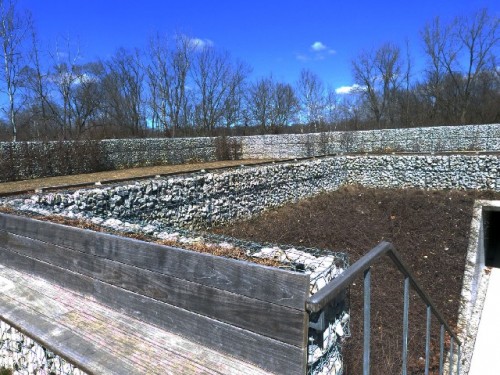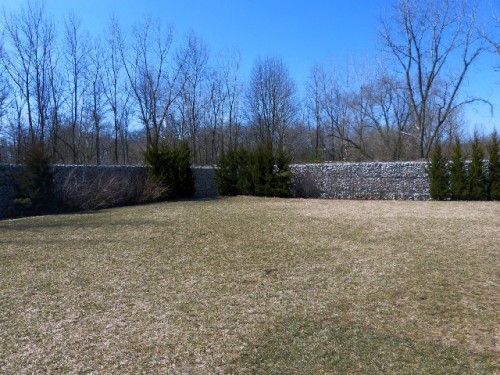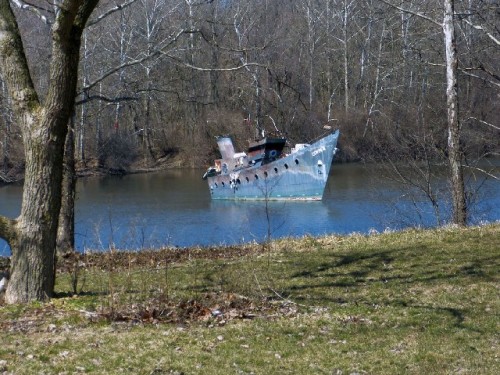Indianapolis Museum of Art
Ai Weiwei: According to What Through July 28
By: Charles Giuliano - Apr 04, 2013
This week, the Indianapolis Museum of Art, one of the nation’s largest encyclopedic museums, opens the most important exhibition of contemporary art currently on view.
In February we visited the survey of work by the dissident, provocative Chinese artist, Ai Weiwei: According to What? organized by the Mori Art Museum, Tokyo and Smithsonian’s Hirshhorn Museum. It opened in Washington, D.C. where it drew enormous crowds. The museum was packed during our Sunday afternoon visit.
Indianapolis is the second of five venues for the touring exhibition. It remains on view through July 28 and closes at the Brooklyn Museum on August 10, 2014.
Unfortunately, the work was being installed during our visit to the museum. We arrived a day early for the American Theatre Critics Association meeting to see museums. There were a couple of Ai Weiwei teasers set up in lobby areas outside the closed special exhibition galleries.
It was fun once again to see his circle of bicycles configuring the sculpture “Forever.” As well as the fascinating, life like, 3,000 ceramic crabs of “He Xie” (2010).
The museum occupies a manicured 152 acre campus that includes historic buildings, parks and greenhouses. There is a nearby 100 Acre sculpture park. For such a rural, bucolic setting the museum and sculpture park are relatively close to the city but far enough away to be off the beaten track for most tourists.
We were grateful to Ivy Hamstra, a Public Affairs Coordinator, who picked us up. She took us on a lively tour of the diverse collections then passed us off to a colleague for a visit to the sculpture park.
Approaching the museum a rusting “Love” by Robert Indiana serves as a signifier for the institution. We learned that it was his first, Corten Steel version of the iconic logo. Initially, it was located in New York’s Central Park.
Entering the glass walled lobby there was a cathedral like play of light. The artist Spencer Finch, who is noted for never repeating himself, transformed the space with a typically clever and inventive economy of means.
We knew his work from a major exhibition at Mass MoCA in 2007. For Indy he applied layers of colored gel over the vertical, rectangular grid of windows. The impact is so stunning that one assumed it was a part of the 2005 renovation and addition.
We asked Ivy if it would be permanent? Apparently not as the entrance is a site for ongoing temporary projects. Rising to the second floor in another spacious area, however, we encountered another “temporary” work, a geometric, site specific painting by the late Sol LeWitt. Given the importance of the artist, all the more so since his demise, it is notable how many of LeWitt’s murals have become permanent.
The LeWitt building at Mass MoCA is contracted to be up for 25 years but I won’t be around to report on what happens after that. There are provisions to refresh and restore the painting in bright primary colors so they won’t become tarnished with time.
A tour of the permanent collection galleries revealed greater depth and genuine surprises than I had anticipated. These included an early Rembrandt “Self Portrait” and “Sleeping Cupid” by Caravaggio when he was just 24. French Impressionism and Post Impressions were well represented with key works by Monet, Cezanne, Gauguin, the Pont Aven School, Seurat and the Pointillists. American art included paintings by the Ashcan School, Georgia O’Keeffe, The American Scene, Regionalism through Abstract Expressionism, contemporary art, and a room with an installation by Maya Lin.
The greatest surprise was encountering two Spanish Catalan, Romanesque murals. They are exceedingly rare in American museums. The most famous example is the Apse of a small Catalan church in the Museum of Fine Arts Boston. It was literally ripped from the walls, looted, packed up in crates marked Parmesan Cheese, and shipped to Boston. After which Spanish officials freaked out and removed all the murals from the small churches in the mountains. We viewed them during a visit to Museo Nacional d'Art de Catalunya.
We wonder how these precious medieval paintings, so richly evocative and primitive, found their way to Indianapolis?
Because of a tight schedule we were not able to tour the floor with a collection of African Art.
Before we comment on the sculpture park a bit of history.
The museum, which underwent a $74 million expansion in 2005, is located on a 152-acre campus on the near northwest area outside downtown Indianapolis, northwest of Crown Hill Cemetery.
It is the ninth oldest and eighth largest encyclopedic art museum in the United States. The permanent collection comprises over 54,000 works, including African, American, Asian, and European pieces.
In addition to its collections, the museum consists of 100 Acres: The Virginia B. Fairbanks Art and Nature Park; Oldfields, a restored American Country Place era estate once owned by Josiah K. Lilly, Jr.; and restored gardens and grounds originally designed by Percival Gallagher of the Olmsted Brothers firm. The IMA also owns the Miller House a Mid-Century modern home designed by Eero Saarinen located in Columbus, Indiana.
Founded in 1883 by the Art Association of Indianapolis, the first permanent museum was opened in 1906 as part of the John Herron Art Institute. In 1969, the Art Association of Indianapolis changed its name to the Indianapolis Museum of Art, and in 1970 the museum moved to its current location at Michigan Road and 38th Street north of downtown Indianapolis.
Among the Art Association's founders was May Wright Sewall (1844–1920), known for her work in the women's suffrage movement. Other supporters have included author Booth Tarkington (1869–1946), drug manufacturer Eli Lilly (1885–1977), Herman C. Krannert (1887–1972), and Caroline Marmon Fesler (1878–1960). The associated John Herron Art Institute was established with the help of notable Hoosier Group artists T. C. Steele and William Forsyth.
A brief drive from the museum we arrived at 100 Acres: The Virginia B. Fairbanks Art and Nature Park which opened in June, 2010. The first eight artists selected to create site-responsive pieces were Atelier Van Lieshout, Kendall Buster, Alfredo Jaar, Jeppe Hein, Los Carpinteros, TTea Mäkipää, Type A, and Andrea Zittel. Later FLOW (Can You See the River?) by Mary Miss was added.
It was a brisk, not yet spring day when we toured the site specific works on a path that was located around a large pond.
Next to the parking lot we encountered an ersatz playground Free Basket by the group Los Carpinteros. There were large, arcing, brightly colored tubes with a basket for playing hoops in its center. We asked if it is used? Apparently yes. It is lit at night for after school and summer half court pickup games.
Indy is a great sports town so this seemed like the perfect project designed to attract young visitors.
Stopping to view signage provided some orientation. But the park is not that big, at least the area that includes installations.
In the trees we saw suspended two, large metal circles. (Type A, American, founded 1998, Team Building (Align), 2010, aluminum, steel cables, telephone poles, (2 rings of 30’ circumference, each). It casts shadows on the ground which merge twice a year during the solstices.
There was a piece with a yet to be inflated hot air balloon planned for the first day of spring that weekend. But the celebration was moved indoors because of a blizzard.
Moving along we found Chop Stick, 2012, by Vision Division. It comprised of a large, stripped poplar tree seemingly thrusting from a small shed where snacks are served in season. There are roughly crafted tables and benches as a kind of alfresco café.
Red lines painted round birch trees surrounding the pond comprised a conceptual art work by Mary Miss. Also surrounding the pond were a series of brightly painted metal benches by the Danish artist Jeppe Hein. It’s nice to have some seating when taking a nature walk.
For me the most ambitious and engaging work was Park of the Laments by the Chilean artist, Alfredo Jarr. One first encounters it as a wall of medium sized rocks encased in wire mesh. It recalls sides of cliffs along the highway so treated to prevent rocks from falling into the road. The site is located over a former gravel pit and the artist found an interesting use for the recycled material.
Around the side we descended into a passageway that led to stairs taking us into a large enclosed space. Along the top of the fabricated walls is a dirt filled trough with plants that in season produce vines that partly cover the walls with greenery. There are also cedar trees around the inside edge of the space which will grow over time.
The space is meant as a place for quiet contemplation. It was surely peace inducing and an inviting setting for prolonged meditation.
The sculpture park has only been open for a couple of years so with time there will be more works. Although sparse this is an enticing beginning.
Our visit to the museum and sculpture park was all too brief. That happens when you are on a tight schedule. What we experienced, however, was first rate.
Between now and July 28 the museum is hosting the sensational Ai Weiwei exhibition. Hopefully it will give visitors a lot to think about. Particularly in a red state not know for embracing radical, dangerous, dissident artists with revolutionary ideas and agendas.


